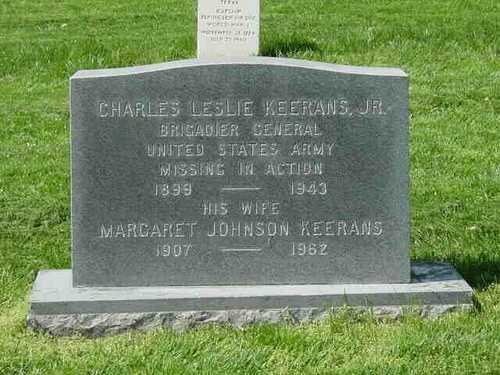
Modern/Post-War Photos
'Bull' Keerans MIA
FBbrummbar
One of the most enduring mysteries during World War II was the puzzling disappearance of Brigadier General Charles Leslie Keerans, Jr., more popularly known to US troops as "Bull" Keerans. Keerans, from Charlotte, North Carolina, graduated from West Point in 1919. He was commissioned in the infantry in 1920. He had a reputation of being a daredevil motorcycle rider. In 1942, he became the Chief of Staff of the 101st Airborne Division in Sicily. In 1943, he became the assistant commander of the 82nd Airborne Division under General Ridgway and became a Brigadier General on July 2, 1943. July 10, 1943. The 82nd prepared for a night jump over the gulf of Gela, on Sicily. Operation Husky encountered difficulties, with several American transport planes being shot down by "friendly fire", adding the fact that Gavin's 505th Parachute Regiment was scattered over a wide area due to a multitude of unpleasant reasons. July 11, 1943. Keerans was in Tunisia waiting to launch the second wave of paratroopers. On the morning of July 11th, he received the code: "Mackall tonight. Wear white pajamas." He ordered the 504th to prepare to drop that evening on an airfield at Farello and reinforce the seaborne landings. Although Keerans was ordered to stay on Tunisia to supervise behind the scenes, he couldn't resist the opportunity to be in the raging battle. At the last minute of the preparation, he rode on a C-47 flown by lieutenants Ray Bousch and John Gibson. As the flight was scheduled to return after the drop, he figured he would be back in Tunisia before dawn. 144 Douglas C-47s arrived over the coast of Gela just after an Axis raid. The paratroopers were suddenly greeted with friendly fire from an Allied vessel. Immediately, all the other naval vessels and shore troops joined in the shooting and began firing on the C-47s, mistaking them for enemy planes. Keerans and his regiment were under grave danger. Transports sustaining heavy fire exploded midair; many panicking paratroopers plunged to their deaths as they jumped without hooking their static lines. Some who successfully deployed their chutes ended up being shot by Allied troops midair. It was a disaster: 23 C-47s were lost out of 144, the 504th suffered 229 casualties with 81 dead.The 52nd Troop Carrier Wing suffered 318 casualties with 83 dead Thirty-seven aircraft were damaged, while eight returned to base without dropping their parachutists. Keerans’ plane was one of those hit by friendly fire, but the pilot was able to crash land the plane in the water, 400 yards off-shore. Although his body was never found, he was officially listed as KIA. Until a certain Sgt. Fielding Armstrong came with a baffling testimony. Sgt. Armstrong was among the few who made it out of the plane. He swam ashore, and by the next morning he saw a familiar face: Bull Keerans. He appeared disheveled but unharmed.The general recounted his escape from the ditched craft and informed Armstrong he had spoken to other soldiers on the beach. The sergeant replied that he was going to hook up with his unit. Keerans told the sergeant he was heading inland and walked away, never to be seen again. Once divisional headquarters heard of account, headquarters across the island were notified to keep a lookout for the missing one-star general. Commanders were puzzled when they received no sightings of the "Bull." He had simply vanished. After the war, investigators and military officials looked for evidences that he was held by the Germans; authorities looked on liberated POW camps but the search turned up empty. One possibility was he was held by the Soviets, since he could be juiced for intelligence, given his general rank in the Army.While there is no direct evidence in his case, it has become widely accepted that hundreds, possibly thousands of allied POWs ended up in Soviet prisons after the war. (In 1991, the U.S. Senate Foreign Relations Committee produced a report claiming thousands of Commonwealth soldiers, including British, Canadian, Australian and South African, had been transferred from their previous German stalags to Soviet custody in the spring of 1945. As recently as 2001, the U.S.-Russian Joint Commission, formed to investigate unconfirmed reports of Americans being held in the former Soviet Gulag prison system, estimated 500 American prisoners had been kept after the war. Soviet leader Josef Stalin anticipated using them as bargaining chips in the ensuing cold war with the western allies.) The fate of Charles "Bull" Keerans has never been resolved. He was survived by his wife, Margaret Johnson, and one son. When Margaret died in 1962, she was buried at Arlington National Cemetery. On the tombstone, his name appeared above hers. "Bull" Keerans is possibly the highest-rank American officer to go MIA in the course of World War II. taken from fb/Nicholson Cruz
2995 Views
10/15/2015
